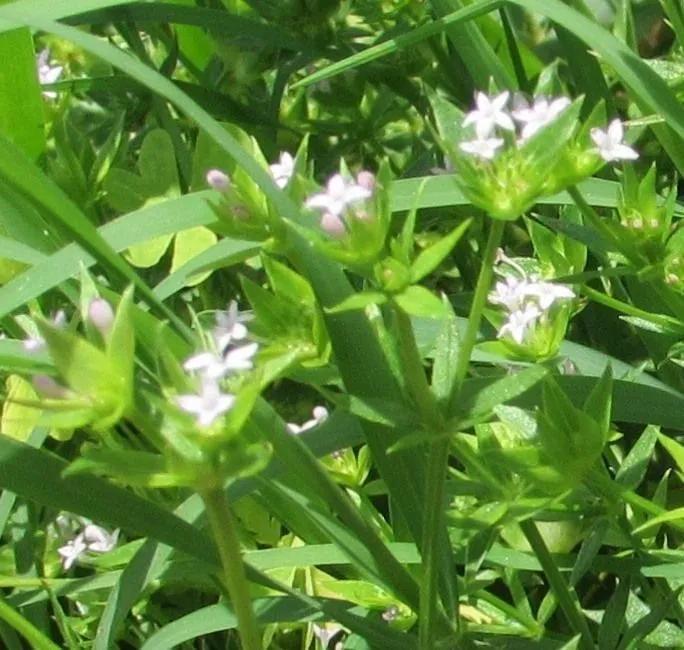
Author: (Lam.) Terrell
Bibliography: Sida 19: 600 (2001)
Year: 2001
Status: accepted
Rank: species
Genus: Stenaria
Vegetable: False
Observations: C. & E. U.S.A. to NE. Mexico, Bahamas
Prairie bluets, known scientifically as Stenaria nigricans, are fascinating members of the Rubiaceae family. This delicate plant is noted for its distinctive beauty and distribution across various regions.
Botanically documented in the publication “Sida” in 2001, Prairie bluets stand out within the flora of the central and eastern United States, extending their presence to the northeastern parts of Mexico and the Bahamas. The species was originally classified by the renowned botanist Lam., and later redefined by Terrell.
Prairie bluets thrive in open grasslands and prairies, basking in the sunlight and contributing to the biodiversity of these ecosystems. Their growth patterns often transform landscapes into picturesque scenes, characterized by a subtle yet captivating display of their small, star-like flowers.
The flowers typically present a delicate hue, which can range from soft blues to whites, embodying the serene beauty of the prairies. These blooms not only enhance the aesthetic appeal of their habitats but also play a crucial role in the local ecosystem, attracting pollinators such as bees and butterflies.
Adaptable and resilient, Stenaria nigricans underscores the rich botanical tapestry of North America and the Bahamas, reflecting the intricate interplay between plant species and their environments. Whether observed in their natural setting or studied for their botanical interest, Prairie bluets remain a remarkable testament to the diversity and splendor of the plant kingdom.
Eng: diamond-flowers, diamondflowers, fine-leaf bluets, prairie bluets, star-violet
En: Prairie bluets, Diamond-flowers, Fine-leaf bluets, Star-violet, Diamondflowers
Taken Jan 23, 2022 by Dave Naish (cc-by-sa)
Taken Oct 5, 2020 by Missi missi (cc-by-sa)
Taken Oct 5, 2020 by Missi missi (cc-by-sa)
Taken Jun 18, 2022 by connor wardle (cc-by-sa)
Taken Aug 27, 2021 by William Hendrickson (cc-by-sa)
Taken Sep 1, 2022 by Ross Kat (cc-by-sa)
Taken Jan 1, 1900 by EOL − Niehaus, T.F. (cc-by-nc-sa)
Taken Sep 14, 2021 by Emma Niven (cc-by-sa)
Taken May 20, 2003 by EOL − Steven J. Baskauf (cc-by-nc-sa)
Taken Oct 5, 2020 by Missi missi (cc-by-sa)
Taken May 31, 2015 by EOL − Linda Jo Conn (cc-by-nc)
Taken May 31, 2015 by EOL − Sam Kieschnick (cc-by-nc)
Taken May 29, 2015 by EOL − Chuck Sexton (cc-by-nc)
Taken May 20, 2003 by EOL − Steven J. Baskauf (cc-by-nc-sa)
Taken Nov 11, 2013 by EOL − Ben VanderWeide (cc-by-nc)
Taken May 20, 2003 by EOL − Steven J. Baskauf (cc-by-nc-sa)
Growth habit>: Forb/herb, Subshrub
Family: Myrtaceae Author: (F.Muell.) K.D.Hill & L.A.S.Johnson Bibliography: Telopea 6: 402 (1995) Year: 1995 Status:…
Family: Rubiaceae Author: Pierre ex A.Froehner Bibliography: Notizbl. Bot. Gart. Berlin-Dahlem 1: 237 (1897) Year:…
Family: Sapindaceae Author: Koidz. Bibliography: J. Coll. Sci. Imp. Univ. Tokyo 32(1): 38 (1911) Year:…
Family: Asteraceae Author: A.Gray Bibliography: Pacif. Railr. Rep.: 107 (1857) Year: 1857 Status: accepted Rank:…
Family: Fabaceae Author: Medik. Bibliography: Vorles. Churpfälz. Phys.-Ökon. Ges. 2: 398 (1787) Year: 1787 Status:…
Family: Aspleniaceae Author: (Cav.) Alston Bibliography: Bull. Misc. Inform. Kew 1932: 309 (1932) Year: 1932…